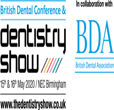 For a dental implant to be successful, firm osseointegration must be achieved. Osseointegration is the process by which bone knits to the surface of the implant – without it, the implant can become loose. Implant stability is regarded as one of the most critical elements for implant treatment success.[i]
For a dental implant to be successful, firm osseointegration must be achieved. Osseointegration is the process by which bone knits to the surface of the implant – without it, the implant can become loose. Implant stability is regarded as one of the most critical elements for implant treatment success.[i]
There are numerous factors that can affect osseointegration in both the long and short-term. Early failures are caused by interference or impairment of the healing process during the initial months following implantation.
Early failures can arise for a number of reasons. Surgical errors of technique can of course result in failure, as can contamination of the surgical site. Implants vary in design and how forces are distributed – while some designs can be more prone to failure, there are reports that others achieve better primary stability.[ii],[iii]
Attaining primary implant stability is essential for osseointegration and this depends largely on the contact between the bone surface and the implant. Mechanical and biological factors such as the quantity of bone and the fit of the implant can also influence the success of osseointegration.[iv]Where bone quality is poor, osseointegration may not occur to the degree required.[v]Careful planning and case selection is required to achieve the best functional and aesthetic outcome for patients.
Later failures are typically due to host factors, such as the presence of systemic health problems, smoking, bruxism, radiation through radiotherapy, etc.[vi]Even if osseointegration has been successful, failure of treatment can occur as a result of peri-implantitis.
Peri-implantitis
Peri-implant complications run the gamut from soft tissue inflammation, all the way to progressive and irreversible bone loss. The former is characteristic of peri-implant mucositis (which is analogous to gingivitis), while the more severe
peri-implantitis is a destructive condition that can result in pocket formation and the loss of hard and soft tissues.[vii]The main clinical characteristic of peri-implant mucositis is bleeding upon gentle probing and due to inflammation, probing depth is often – but not always – increased. Erythema (redness), swelling or suppuration may also be found.[viii]Peri-implant mucositis precedes peri-implantitis. These complications are now believed to be alarmingly prevalent, with nearly half of dental implant patients developing peri-implant mucositis, and over a fifth of that group going on to develop peri-implantitis.[ix]
Where the infection is only present in the soft tissues, as in peri-implant mucositis, minimally invasive treatment is possible by treating contributing factors – namely restoring plaque/biofilm control. Following this, symptoms can take in excess of three weeks to subside. However, if the infection reaches the bone tissue, surgical intervention is typically required, though in some cases antibiotic therapy in conjunction with non-surgical periodontal therapy may be feasible.[x],[xi]The progression of peri-implantitis and the rate of bone loss can vary considerably between patients, but typically proceeds faster than in cases of periodontitis. In the absence of treatment, progression accelerates over time, so early detection and intervention is highly preferred.[xii]
Research indicates that peri-implant soft tissues are more vulnerable than the gingiva, with greater inflammatory responses observed in reaction to plaque accumulation.[xiii]
Treating peri-implantitis is challenging and subsequent osseointegration will likely be impeded, resulting in less stability following successful treatment than prior to the onset of the disease.[xiv]Peri-implant complications are caused by failure to maintain adequate oral hygiene. Making sure patients understand the critical importance of looking after their oral health is the best preventative step that can be taken. Some patients are still under the misapprehension that because implants are artificial, they are in some way indestructible and do not necessarily appreciate the vulnerability of the bone-implant interface.
Retrograde peri-implantitis (RPI) is a rare surgical complication, where infection occurs at or shortly after implant placement. This has been attributed to a wide range of causes, including drilling too far, contamination during insertion, overheating the bone, micro-fracturing, pre-existing inflammation/infection, and so on. Unlike the aforementioned peri-diseases, RPI is not detectable through probing and in some cases may be asymptomatic. When successfully treated, healing following RPI is usually more complete than in cases of peri-implantitis.[xv]Consequently, very few implant failures due to RPI have been reported.[xvi]
Peri-implant mucositis (and subsequent peri-implantitis) has been clearly demonstrated to be caused by plaque accumulation around implants. Smoking has also been established as a risk factor. Some research has linked diabetes, genetics, and the surface characteristics of an implant as additional risk factors.[xvii]
Implant stability is an important diagnostic measure for gauging the success of implant procedures in both the short and long term. Designed to complement the No Implantology without Periodontology (NIWOP) workflow concept exclusive to W&H, the Osstell BeaconTMis the byword for reliable, non-invasive implant stability measurement, providing an easy and accurate way of taking primary and secondary stability readings. The Osstell BeaconTMfrom W&H provides easy-to-understand IDX and ISQ values, which can help with diagnosis and predicting implant success or failure.[xviii]ISQ values have also proven useful in diagnosing progressive bone loss due to peri-implantitis.[xix]
Careful planning and execution of treatment can make a significant difference to the success of highly stable dental implants. However, this work can be undone by patients failing to look after their oral health. Patient education and sufficient monitoring of treatment are important to ensure that successful outcomes stay successful.
To find out more about the full range from W&H, visit www.wh.com/en_uk, call 01727 874990 or email office.uk@wh.com
REFERENCES
[i]Miri R., Shirzadeh A., Kermani H., Khajavi A. Relationship and changes of primary and secondary stability in dental implants: a review. International Journal of Contemporary Dental and Medical Reviews. 2017; 2017. https://doi.org/10.15713/ins.ijcdmr.112March 7, 2019.
[ii]Kate M., Palaskar S., Kapoor P. Implant failure: a dentist’s nightmare.Journal of Dental Implants. 2016; 6(2): 51-56. http://www.jdionline.org/text.asp?2016/6/2/51/202154March 7, 2019.
[iii]Karl M., Irastorza-Landa A. Does implant design affect primary stability in extraction sites? Quintessence International.2017; 48(3): 219-224. https://www.ncbi.nlm.nih.gov/pubmed/28168242March 7, 2019.
[iv]Baftijari D., Benedetti A., Kirkov A., Iliev A., Stamatoski A., Baftijari F., Deliverska E., Gjorgievska E. Assessment of primary and secondary implant stability by resonance frequency analysis in anterior and posterior segments of maxillary edentulous ridges. Journal of IMAB. 2018; 24(2): 2058-2064.https://doi.org/10.5272/jimab.2018242.2058March 7, 2019.
[v]Li J., Yin X., Huang L., Mouraret S., Brunski J., Cordova L., Salmon B., Helms J. Relationships among bone quality, implant osseointegration, and Wnt signaling. Journal of Dental Research.2017; 96(7): 822-831. https://www.ncbi.nlm.nih.gov/pmc/articles/PMC5480808/March 7, 2019.
[vi]Kate M., Palaskar S., Kapoor P. Implant failure: a dentist’s nightmare.Journal of Dental Implants. 2016; 6(2): 51-56. http://www.jdionline.org/text.asp?2016/6/2/51/202154March 7, 2019.
[vii]Wang W., Lagoudis M., Yeh C., Paranhos K. Management of peri-implantitis – a contemporary synopsis. Singapore Dental Journal. 2017; 38: 8-16. https://www.sciencedirect.com/science/article/pii/S0377529116301195March 7, 2019.
[viii]Berglundh T., Armitage G., Araujo M., Avila-Ortiz G., Blanco J., Camargo P., Chen S., Cochran D., Derks J., Figuero E., Hämmerle C., Heitz-Mayfield L., Huynh-Ba G., Iacono V., Koo K., Lambert F., McCauley L., Quirynen M., Renvert S., Salvi G., Schwarz F., Tarnow D., Tomasi C., Wang H., Zitzmann N. Peri-implant diseases and conditions: consensus report of workgroup 4 of the 2017 world workshop on the classification of periodontal and peri-implant diseases and conditions. Journal of Clinical Periodontology. 2018; 45(Suppl. 20): S286-S291. https://onlinelibrary.wiley.com/doi/full/10.1111/jcpe.12957March 7, 2019.
[ix]Holland C. Combating peri-implant disease. British Dental Journal. 2016; 220(2): 48-49. https://www.nature.com/articles/sj.bdj.2016.46.pdfMarch 7, 2019.
[x]Wang W., Lagoudis M., Yeh C., Paranhos K. Management of peri-implantitis – a contemporary synopsis. Singapore Dental Journal. 2017; 38: 8-16. https://www.sciencedirect.com/science/article/pii/S0377529116301195March 7, 2019.
[xi]Pierce J., Gurenlain J. Risk assessment for peri-implantitis. Decisions in Dentistry. 2017; 3(5): 28-31.http://decisionsindentistry.com/article/risk-assessment-peri-implantitis/March 7, 2019.
[xii]Berglundh T., Armitage G., Araujo M., Avila-Ortiz G., Blanco J., Camargo P., Chen S., Cochran D., Derks J., Figuero E., Hämmerle C., Heitz-Mayfield L., Huynh-Ba G., Iacono V., Koo K., Lambert F., McCauley L., Quirynen M., Renvert S., Salvi G., Schwarz F., Tarnow D., Tomasi C., Wang H., Zitzmann N. Peri-implant diseases and conditions: consensus report of workgroup 4 of the 2017 world workshop on the classification of periodontal and peri-implant diseases and conditions. Journal of Clinical Periodontology. 2018; 45(Suppl. 20): S286-S291. https://onlinelibrary.wiley.com/doi/full/10.1111/jcpe.12957March 7, 2019.
[xiii]Salvi G., Aglietta M., Eick S., Sculean A., Lang N., Ramseier C. Reversiblity of experimental peri-implant mucositis compared with gingivitis in humans. Clinical Oral Implants Research.2012; 23(2): 182-290. https://www.ncbi.nlm.nih.gov/pubmed/21806683March 7, 2019.
[xiv]Javed F., Hussain H., Romanos G. Re-stability of dental implants following treatment of peri-implantitis. Interventional Medicine & Applied Science. 2013; 5(3): 116-121. https://www.ncbi.nlm.nih.gov/pmc/articles/PMC3831812/March 7, 2019.
[xv]Shah R., Thomas R., Kumar A., Mehta D. A radiographic classification for retrograde peri-implantitis. The Journal of Contemporary Dental Practice.2016; 17(4): 313-321. https://www.researchgate.net/publication/305480802_A_Radiographic_Classification_for_Retrograde_Peri-implantitisMarch 7, 2019.
[xvi]Kate M., Palaskar S., Kapoor P. Implant failure: a dentist’s nightmare.Journal of Dental Implants. 2016; 6(2): 51-56. http://www.jdionline.org/text.asp?2016/6/2/51/202154March 7, 2019.
[xvii]Renvert S., Polyzois I. Risk factors for peri-implant mucositis: a systematic literature review. 2014; 42(Suppl. 16): S172-186. https://onlinelibrary.wiley.com/doi/full/10.1111/jcpe.12346March 7, 2019.
[xviii]Baftijari D., Benedetti A., Kirkov A., Iliev A., Stamatoski A., Baftijari F., Deliverska E., Gjorgievska E. Assessment of primary and secondary implant stability by resonance frequency analysis in anterior and posterior segments of maxillary edentulous ridges. Journal of IMAB. 2018; 24(2): 2058-2064.https://doi.org/10.5272/jimab.2018242.2058March 7, 2019.
[xix]Monje A., Insua A., Monje F., Munoz F., Salvi G., Buser D., Chappuis V. Diagnostic accuracy of the implant stability quotient in monitoring progressive peri-implant bone loss: an experimental study in dogs. Clinical Oral Implants Research. 2018; 29(Suppl. 11): 1016-1024. https://www.researchgate.net/publication/327957292March 7, 2019.






 It’s not uncommon to walk past someone on the street and become bewitched by the scent of their aftershave or perfume. After all, these scents have been specifically manufactured to elicit certain responses in our psyche, whether that is pleasure, attraction or other positive emotions. But have you ever wondered how scent really influences our minds?
It’s not uncommon to walk past someone on the street and become bewitched by the scent of their aftershave or perfume. After all, these scents have been specifically manufactured to elicit certain responses in our psyche, whether that is pleasure, attraction or other positive emotions. But have you ever wondered how scent really influences our minds?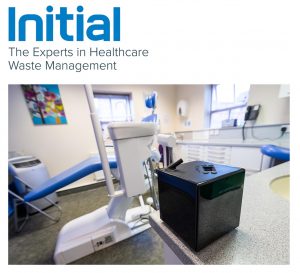
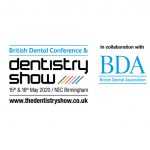
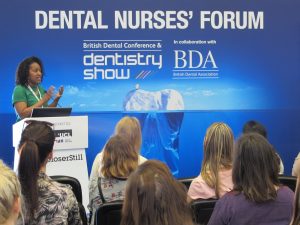 The British Dental Conference and Dentistry Show 2019 provided the perfect platform for dental nurses to get up-to-date on the latest concepts and career development pathways. The Dental Nurses’ Forum, supported by the British Association of Dental Nurses (BADN), presented a programme brimming with ideas designed to inspire delegates.
The British Dental Conference and Dentistry Show 2019 provided the perfect platform for dental nurses to get up-to-date on the latest concepts and career development pathways. The Dental Nurses’ Forum, supported by the British Association of Dental Nurses (BADN), presented a programme brimming with ideas designed to inspire delegates.
 For a dental implant to be successful, firm osseointegration must be achieved. Osseointegration is the process by which bone knits to the surface of the implant – without it, the implant can become loose. Implant stability is regarded as one of the most critical elements for implant treatment success.
For a dental implant to be successful, firm osseointegration must be achieved. Osseointegration is the process by which bone knits to the surface of the implant – without it, the implant can become loose. Implant stability is regarded as one of the most critical elements for implant treatment success.
 Overflowing landfills and polluted waterways remain stark evidence of the way in which we as a society see many things as disposable, replaceable or temporary. It is this attitude that has given rise to throwaway culture, which refers to the excessive production and over consumption of short-lived, single-use items. Throwaway culture has become such a global crisis that many leading figures have spoken out against the issue. It is not only contributing to the depletion of our planet’s precious, finite resources, but also threatens to permanently damage the environment – particularly as it is having a substantial impact on the way we deal with waste.
Overflowing landfills and polluted waterways remain stark evidence of the way in which we as a society see many things as disposable, replaceable or temporary. It is this attitude that has given rise to throwaway culture, which refers to the excessive production and over consumption of short-lived, single-use items. Throwaway culture has become such a global crisis that many leading figures have spoken out against the issue. It is not only contributing to the depletion of our planet’s precious, finite resources, but also threatens to permanently damage the environment – particularly as it is having a substantial impact on the way we deal with waste.
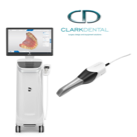



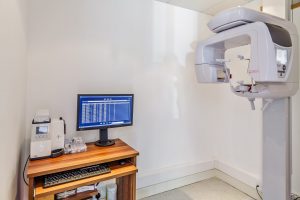 Cone Beam Computed Tomography (CBCT), is useful across many areas of dentistry – including when diagnosing certain oral and maxillofacial pathologies and planning surgeries. Assessing bone quality and identifying vital structures such as the mandibular canal, blood vessels and maxillary sinus floor are important to reduce the risk of life threatening and life changing complications. CBCT imaging can be an invaluable tool when assessing and planning oral surgical procedures and dental implant surgery.
Cone Beam Computed Tomography (CBCT), is useful across many areas of dentistry – including when diagnosing certain oral and maxillofacial pathologies and planning surgeries. Assessing bone quality and identifying vital structures such as the mandibular canal, blood vessels and maxillary sinus floor are important to reduce the risk of life threatening and life changing complications. CBCT imaging can be an invaluable tool when assessing and planning oral surgical procedures and dental implant surgery.
